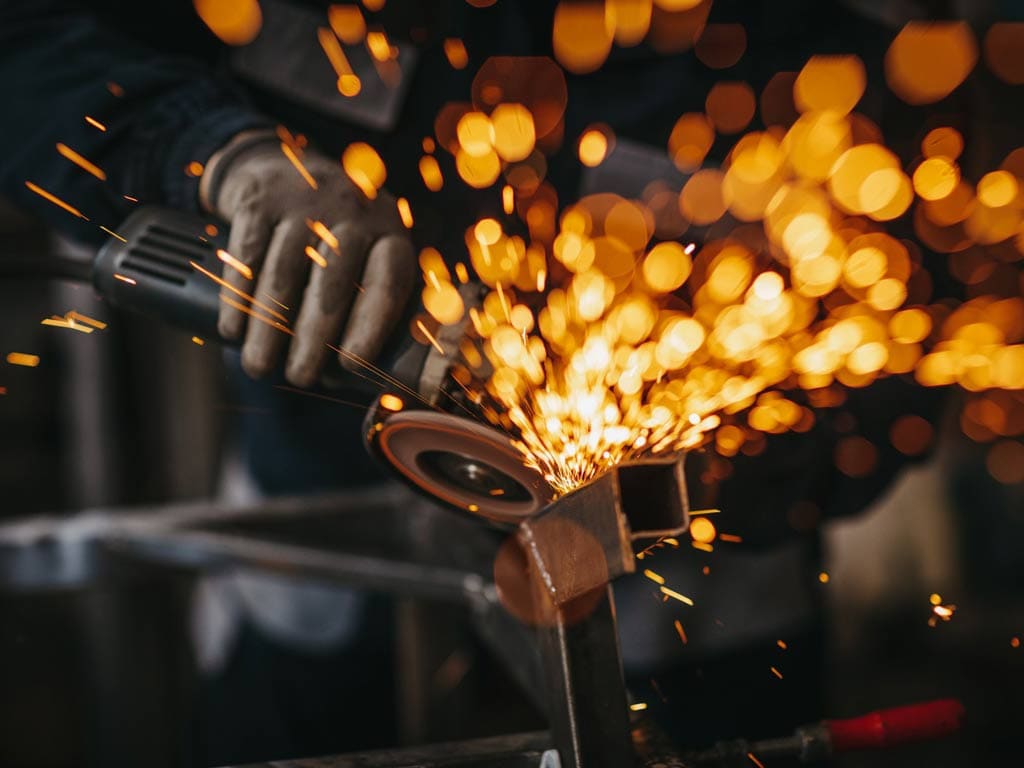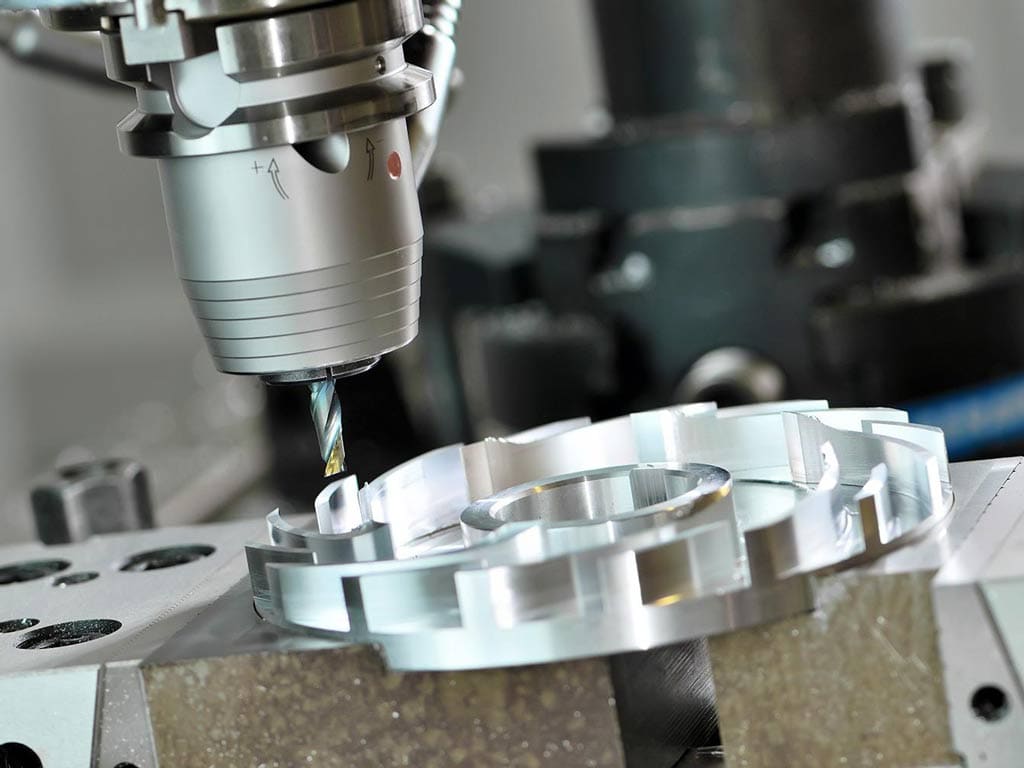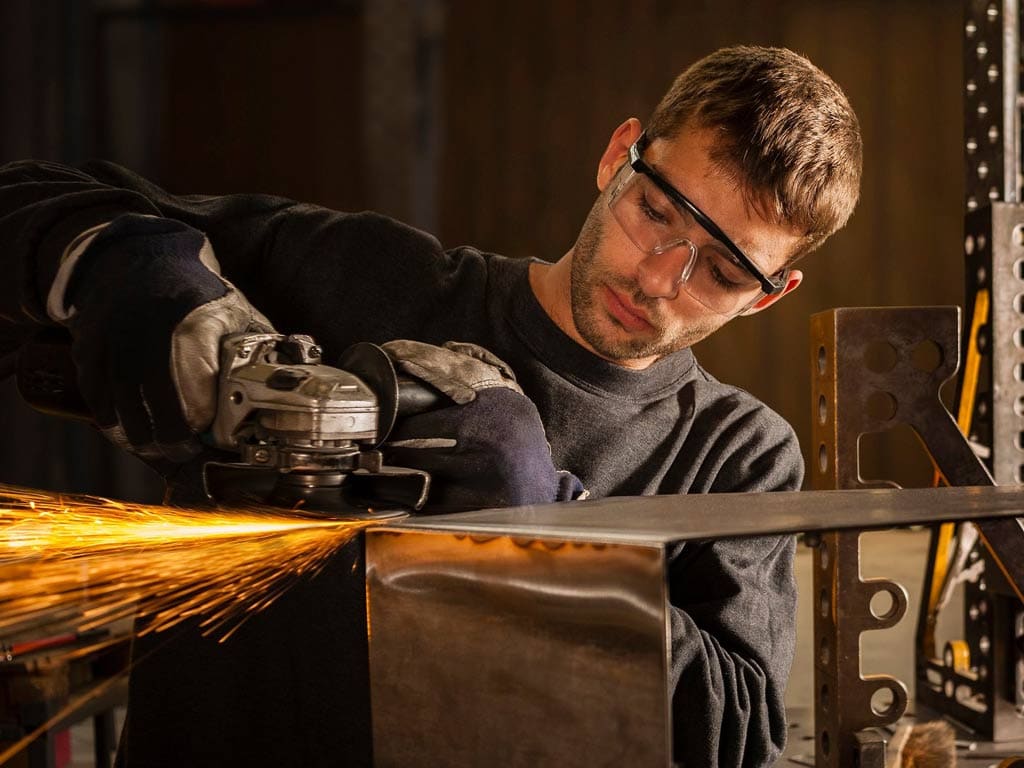INDUSTRIAL GRINDING
PRECISION FINISHING
Industrial grinding means finishing with the use of specialised abrasive tools. It can be carried out on planes and shafts, although it is also possible to grind holes and cylinders in vehicle engines. This method utilises grinding wheels featuring bonded abrasive grains, usually of corundum or carbides (boron or silicon). The sharp edges of the grains make it possible to remove small-size chips from the machined surfaces. The basic assumption of industrial grinding is the mutual mechanical interaction of two materials of different hardnesses. The harder (abrasive) material is used for making the desired loss in a machined material of lower hardness.
The use of this method for hole grinding does not cause the risk of damage to the machined surface or imprecise grinding. This is possible thanks to the self-sharpening of the grinding wheel, which involves the replacement of abrasive grains worn away, dulled, cracked or chipped during operation. They are replaced in a natural way with adjacent grains.



What is industrial grinding intended for?
The purpose of industrial grinding is to remove a base material. This process is considered a part of finish machining. It utilises various abrasive tools to give the machined surface some specific features, such as roughness, gloss, adhesion, radii, smoothness and increased corrosion resistance. High precision dimensions and shapes can also be achieved as a result of grinding. Grinding is carried out in the final stages of machining, as it is based on finishing the hard areas of parts that were previously processed using other methods.
In industry, grinding is intended for the machining of pipes, sheet metal surfaces, flashes, weld seams, the cleaning of rust, scale and other impurities from metals, the rebuilding of elements made of steel, the removal of surface scratches or as part of surface preparation for paint coatings. Grinding can be applied to various materials commonly used in industry and the automotive sector in particular, such as: steel, cast iron, aluminium, brass, ZnAl, magnesium, titanium, as well as intermediate alloys. The grain type and speed of the cutting tools are always matched to the machined material properties for best performance.
What is the reason for hole and cylinder grinding?
The grinding of holes and cylinders is done to finish many elements used in industry, including the automotive sector. It is used to give the desired features to the machined parts. This method is also applied in car engine rebuilding, where it can be used for hole grinding. All defects of the cylinder bearing surface are removed thanks to diameter enlargement. We offer our clients HONING – the state-of-the-art technology for hole and cylinder grinding.

